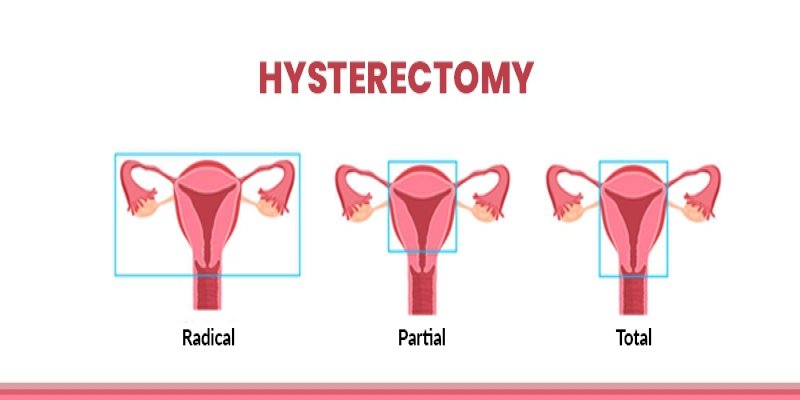Introduction

Maa Nursing Home and NetraJyoti Eyecare Centre has the expertise, state of the art operation theatre and equipment to successfully conduct Open and Laparoscopic hysterectomies.
What is a Hysterectomy?
A hysterectomy is a major surgery to remove the womb (uterus) with or without the ovaries and fallopian tubes. After the operation, the woman will not have her monthly periods and will not get pregnant after the surgery.
Doctors recommend a hysterectomy to a patient only when other treatment options have been unsuccessful in relieving her of the health problems. Doctors will also consider her desire to have children while deciding on the surgery.
Post operative Uterus removal experience by patient and Dr. Jyoti Shah
What are the medical conditions for a Hysterectomy?
A hysterectomy is suggested by the doctor when a woman suffers from:
- Heavy bleeding during her periods
- Severe pelvic pain
- Fibroids
- Endometriosis
- Prolapse of the uterus
- Cancer of the womb, ovaries, or cervix
If the doctor removes the ovaries, it leads to forced menopause or surgical menopause.
When the ovary is retained, the patient will most likely experience menopause within the next five years of the operation. After menopause, ovaries continue to produce testosterone, a hormone stimulating the sexual drive.
Menopausal symptoms such as hot flushes, mood swings, fatigue, vaginal dryness, disturbed sleep, night sweats, etc., occur due to lack of oestrogen. Usually, the doctor gives Hormone replacement therapy (HRT) to the patient after the surgery to help with menopausal symptoms.
What are the different types of Hysterectomy?
Different types of hysterectomy surgery depend on how much your womb and reproductive system is removed or saved.
- Total hysterectomy removes the uterus along with the cervix. There's no risk of you developing cervical cancer later after such surgeries.
- Subtotal Hysterectomy involves removing the main body of the womb and leaving the cervix in place.
- Total Hysterectomy with bilateral salpingo-oophorectomy is a hysterectomy that also involves removing the fallopian tubes (salpingectomy) and the ovaries (oophorectomy)
- Radical Hysterectomy removes and treats cancer when other treatments, such as chemotherapy and radiotherapy, are not suitable or have not worked. During this procedure, the body of your womb and cervix is removed, along with the fallopian tubes, part of your vagina, ovaries, lymph glands, and fatty tissue around it.
What are the different methods of performing Hysterectomy Surgery?
There are three ways to do a hysterectomy
- Laparoscopic hysterectomy:
Laparoscopic surgery is also known as minimally invasive or keyhole surgery. When the reproductive organs and their surrounding tissues need to be removed, this is the preferred surgery. During the procedure, a tiny cut is made on the abdomen to insert a small tube containing a telescope (laparoscope) and a video camera.
It allows the surgeon to see your internal organs. Instruments are then inserted through other small incisions in your abdomen or vagina to remove your womb, cervix, and other parts of your reproductive system.
- Vaginal hysterectomy:
During a vaginal hysterectomy, the doctor removes the womb and cervix through an incision made above the vagina.
Special surgical instruments are inserted into the vagina to detach the womb from the ligaments that hold it in place.
After the womb and cervix get removed, the doctor stitches the cut.
This type of surgery is usually preferred over an abdominal hysterectomy as it's less invasive and involves a shorter stay in the hospital. The recovery time also tends to be quicker.
- Abdominal (Open) hysterectomy:
During an open hysterectomy, the doctor makes a horizontal or vertical cut in the abdomen. A vertical incision is preferred for cases with large fibroids (non-cancerous growths) or in the case of some types of cancer. If there are enlarged fibroids or pelvic tumours and it's not possible to remove them through your vagina, the doctor will suggest going for an open hysterectomy.
The doctor will recommend this type of surgery if your ovaries need removal.
How long does it take to return to routine?
Recovery with Laparoscopic surgery is faster, and the hospital stay is 2-3 days only. Patients undergoing open surgeries take a longer time for the wound to heal and to return to their routine.

What are the precautions to be taken after the surgery?
Sex is to be avoided for at least 4-6 weeks till the scars heal and there is no vaginal discharge. Studies show that pain during sex reduces, and orgasm, libido and sexual activity improve after a hysterectomy.
If you have multiple partners, continue to use condoms to protect yourself against sexually transmitted diseases (STDs).
Are there any side effects of this surgery?
You may face some temporary health problems:
- Urinary tract infections
- constipation
- Vaginal bleeding and discharge
- Menopausal symptoms such as hot flushes, sweat, depression, mood swings, etc.